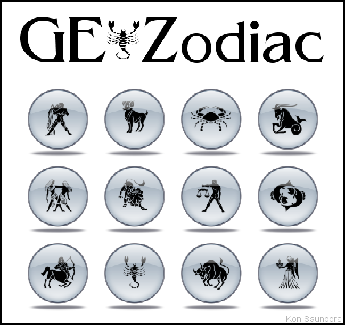The new amplifier of the HERCULES laser fires. The laser is now capable of producing a beam so intense scientists believe it sets a world record.
Credit: Anatoly Maksimchuk/EECS
Click image for higher resolution
ANN ARBOR, Mich.—If you could hold a giant magnifying glass in space and focus all the sunlight shining toward Earth onto one grain of sand, that concentrated ray would approach the intensity of a new laser beam made in a University of Michigan laboratory.
"That's the instantaneous intensity we can produce," said Karl Krushelnick, a physics and engineering professor. "I don't know of another place in the universe that would have this intensity of light. We believe this is a record."
The pulsed laser beam lasts just 30 femtoseconds. A femtosecond is a millionth of a billionth of a second. The beam is twice as intense as one the researchers produced in 2004.
Such intense beams could help scientists develop better proton and electron beams for radiation treatment of cancer, among other applications.
The record-setting beam measures 20 billion trillion watts per square centimeter. It contains 300 terawatts of power. That's 300 times the capacity of the entire U.S. electricity grid. The laser beam's power is concentrated to a 1.3-micron speck about 100th the diameter of a human hair. A human hair is about 100 microns wide.
This intensity is about two orders of magnitude higher than any other laser in the world can produce, said Victor Yanovsky, a research scientist in the U-M Department of Electrical Engineering and Computer Science who built the ultra-high power system over the past six years.
The laser can produce this intense beam once every 10 seconds, whereas other powerful lasers can take an hour to recharge.
"We can get such high power by putting a moderate amount of energy into a very, very short time period," Yanovsky said. "We're storing energy and releasing it in a microscopic fraction of a second."
To achieve this beam, the research team added another amplifier to the HERCULES laser system, which previously operated at 50 terawatts.
HERCULES is a titanium-sapphire laser that takes up several rooms at U-M's Center for Ultrafast Optical Science. Light fed into it bounces like a pinball off a series of mirrors and other optical elements. It gets stretched, energized, squeezed and focused along the way.
HERCULES uses the technique of chirped pulse amplification developed by U-M engineering professor emeritus Gerard Mourou in the 1980s. Chirped pulse amplification relies on grooved surfaces called diffraction gratings to stretch a very short duration laser pulse so that it lasts 50,000 times longer. This stretched pulse can then be amplified to much higher energy without damaging the optics in its path. After the beam is amplified to a higher energy by passing through titanium-sapphire crystals, an optical compressor reverses the stretching, squeezing the laser pulse until it's close to its original duration. The beam is then focused to ultra-high intensity.
In addition to medical uses, intense laser beams like these could help researchers explore new frontiers in science. At even more extreme intensities, laser beams could potentially "boil the vacuum," which scientists theorize would generate matter by merely focusing light into empty space. Some scientists also see applications in inertial confinement fusion research, coaxing low-mass atoms to join together into heavier ones and release energy in the process.
A paper on this research, "Ultra-high intensity 300-TW laser at 0.1 Hz repetition rate," is published online in the journal Optics Express. The full text is available at http://www.opticsinfobase.org/abstract.cfm?URI=oe-16-3-2109. Yanovsky and Krushelnick are authors of the paper.
Krushelnick is a professor in the departments of Nuclear Engineering and Radiological Sciences, Electrical Engineering and Computer Science, and Physics. Yanovsky is a research scientist in the Department of Electrical Engineering and Computer Science. They are co-principal investigators in the U-M Frontiers in Optical Coherent and Ultrafast Science Center (FOCUS), a National Science Foundation Physics Frontier Center. Krushelnick is also associate director of the Center for Ultrafast Optical Science. The research team for this project also includes Vladimir Chvykov, an associate research scientist in the Department of Electrical Engineering and Computer Science, and Galina Kalinchenko, an assistant research scientist in the Department of Electrical Engineering and Computer Science.
Michigan Engineering:
The University of Michigan College of Engineering is ranked among the top engineering schools in the country. Michigan Engineering boasts one of the largest engineering research budgets of any public university, at more than $130 million annually. Michigan Engineering is home to 11 academic departments and a National Science Foundation Engineering Research Center. The College plays a leading role in the Michigan Memorial Phoenix Energy Institute and the Graham Environmental Sustainability Institute. Within the College, there is a special emphasis on research in three emerging areas: nanotechnology and integrated microsystems; cellular and molecular biotechnology; and information technology. Michigan Engineering is raising $300 million for capital projects and program support in these and other areas to continue fostering breakthrough scholarly advances, an unparalleled scope of student opportunities and contributions that improve
Source
http://www.ns.umich.edu/htdocs/releases/story.php?id=6346
More articles;
http://cph-theory.persiangig.com/english.htm
Sincerely
Hossein Javadi
http://cph-theory.persiangig.com
email:javadi_hossein@hotmail.com
amir_javadi4@yahoo.com
[Non-text portions of this message have been removed]
Messages archives at :
http://groups.yahoo.com/group/jlnlabs/
To unsubscribe, send a blank email to jlnlabs-unsubscribe@egroups.com
JLN Labs web site at: http://www.jlnlabs.org
Yahoo! Groups Links
<*> To visit your group on the web, go to:
http://groups.yahoo.com/group/jlnlabs/
<*> Your email settings:
Individual Email | Traditional
<*> To change settings online go to:
http://groups.yahoo.com/group/jlnlabs/join
(Yahoo! ID required)
<*> To change settings via email:
mailto:jlnlabs-digest@yahoogroups.com
mailto:jlnlabs-fullfeatured@yahoogroups.com
<*> To unsubscribe from this group, send an email to:
jlnlabs-unsubscribe@yahoogroups.com
<*> Your use of Yahoo! Groups is subject to:




Tidak ada komentar:
Posting Komentar